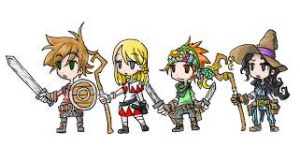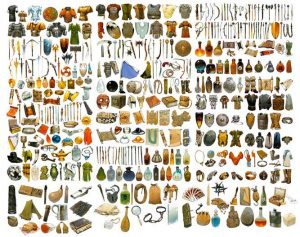
I was reading Gnomestew blog the other day (and linked to some on the Weekend Roundup) and started thinking about optimal party size for me personally as a GM. It’s certainly harder to put together any group as I get older—conflicting schedules and responsibilities of adult players creates significant barriers to game times. Right now I have 3 core players who can attend our bi-weekly game and another 2 that attend less frequently.
Certainly fewer players allows me to create much richer backgrounds for the PC’s and gives the players more time to “shine” during game play. More players and you run into group dynamics (distractions, leadership issues, group decision making etc). Here are my thoughts on the typical party size.
1 Player. Not for me anymore. When I was just starting out, any chance to play was good so having a GM and 1 player was better than nothing. (ignoring solo adventures). Now I’d rather not GM if I only have 1 player. It’s not rewarding for me for the work and effort needed.
2 Players. We had a few sessions with last minute player cancellation and went ahead with 2 players. The group was in the middle of a busy part of the adventure so I needed to carry the missing PC’s as NPC’s. I think the two players had fun in that session but didn’t enjoy the extra duties. What if it were just the 2 players? That might have worked but I’ve found that with only 2 players each wants to pursue individual agendas and goals. That’s easier to do now via PBM mechanisms between game sessions. (having magic items made, training etc)
3 Players. I like 3 players—decisions are made quicker, game flow moves and each PC can take an over sized role in the narrative. Since we use “NO Profession” there is rarely an issue with skill deficits or party balance. I can really focus on integrating the PC’s background, skills and the players interests into the narrative which makes for more personal “payoffs” for the group.
4 Players. Is this the standard trope? (Fighter, Thief, Magic User, Cleric). Even with us discarding professions the group still finds itself trying to create skill balances to emulate this traditional 4 PC party. I like 4 players for the added diversity but keeping the smaller group dynamic and efficiency.
5 Players. The majority of my groups have been 5 players. I do like the added energy and the additional power/abilities from the extra player. However, I’ve found with 5 players there is always 1 player who doesn’t quite fit in, has an over or under-sized role, or is a distraction to game play. I’ve found that to be the nature of the larger groups.
6 Players. I’ve had a few opportunities to GM 6 player groups. Not really for me unless it’s a “one-off” tournament style adventure. (Like the Lair of Ozymandias). Combat goes very slow, the group gets distracted easily, inter-player competitiveness becomes more pronounced and it’s harder to give every player “time to shine”.
What’s been your experience?












